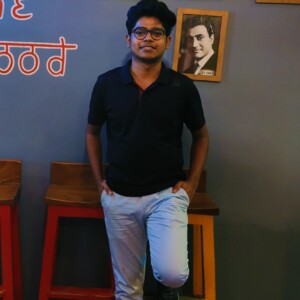
Harshawardhan Borde
University of Leicester
Project
Luminescence dating is a tool to interrogate multi-scale coastal landscape response, Cape South Coast, South Africa
Supervisors
- Dr Andrew Carr
- Dr Mark Powell
PhD Summary
My PhD research involves studying the coastal landscape response to climate and sea level change throughout the Quaternary. The primary focus is on coastal landscape evolution along the southern coast of South Africa. We will be studying the coastal dunes and barrier systems which are formed as a response of paleoclimate change and coastal sea level change during Quaternary. Southern coast of South Africa has Aeolianites that is cemented Aeolian sand dune deposits with CaCO3 from fragmented Shell which can tell us about the glacial interglacial eustatic (Global) sea level change. Formation of Aeolianites is said to be interglacial, but also some evidence of glacial and there is still debate. The oldest dated age is around 250 Ka and we need to understand landscape processes beyond that for better understanding of coastal response to past climate change. We have some erosional evidence on the coast which could reveal past climate and eustatic changes. There is need for rapid age assessment method to generate large age dataset. This project aims to answer these questions with the application and methodological advancements in the Optically Stimulated Luminescence (OSL) dating method.
Previous activity
I was pursuing my BS-MS (5-year dual degree) at the Indian Institute of Science Education and Research (IISER), Kolkata. I majored in Earth Sciences, Studying the Past Climate of Kashmir for the last 300 Ka using the Luminescence (OSL) dating method. I became interested in different dating (proxy) techniques and their applications in Geomorphology, Geochronology and Paleoclimate. To further explore and study dating methods, I attended a few workshops and training events at the Inter-University Accelerator Centre (IUAC) New Delhi, where I developed skills in instrumentation, sample preparation and data analysis for AMS, HR-SIMS, LA-ICP-MS, HR-ICP-MS and FE-SEM. I also joined IITM (Pune), worked on climate modelling and prediction, and developed skills in using 3D VAR and 4D climate models with HPC (Supercomputer).
Why did you choose doctoral research?
During my master’s, I worked on Luminescence (OSL and IRSL) dating methods and applications in Geomorphology, Geochronology and Paleoclimatic studies. The Luminescence method particularly interested me, and I wanted to explore further how these methods could be used for answering questions related to Climate Change, Long-term Geomorphic evolution of Landscape, and Creating robust Spatio-Temporal age dataset for a region to understand physical processes and climatic events better. I also wanted to use different methodological approaches and modify the protocol to advance the technique so that large age (dating) datasets could be generated and to extend the existing limit of age determination. PhD seemed the right next step for me to study the detailed methodological and technical aspects of Luminescence dating methods and understand their applications for understanding the Earth’s past physical processes, landscape evolution and climatic events. My long-term aspiration is to be a researcher to advance the method and apply it to understand past active processes during Quaternary. Ph.D. is an opportunity to gain advanced knowledge, develop skills for working towards advancing science, and share my research on the global platform.
Why did you choose CENTA?
CENTA has access to a wide range of programs, opportunities and training events for professional and personal development and helps students develop Scientific, Technical and Soft skills. At CENTA, a student can focus on skills they want to develop and improve according to their research and personal needs. The collaborative and interactive opportunities within and outside CENTA attracted me. CENTA training and placement opportunity is perfect for someone like me who is open to career opportunities beyond academia. At CENTA, I can build professional and social network with wide range of PGRs from different background and disciplines.
Future plans
I love Dating… Well Optically Stimulated Luminescence (OSL) dating. I want to continue my research and build career working in OSL, advancing the method and apply it to answer questions related to Earth’s physical evolution through Quaternary and Paleoclimate. My research could be applied in other disciplines like Archaeology, Seismology and Geology. With the training and development from CENTA and strong PhD profile from University of Leicester, I should be desirable candidate for range of future employers. I see myself working in Academia, however I am also open to other career opportunities in Government Agencies and Industry.
